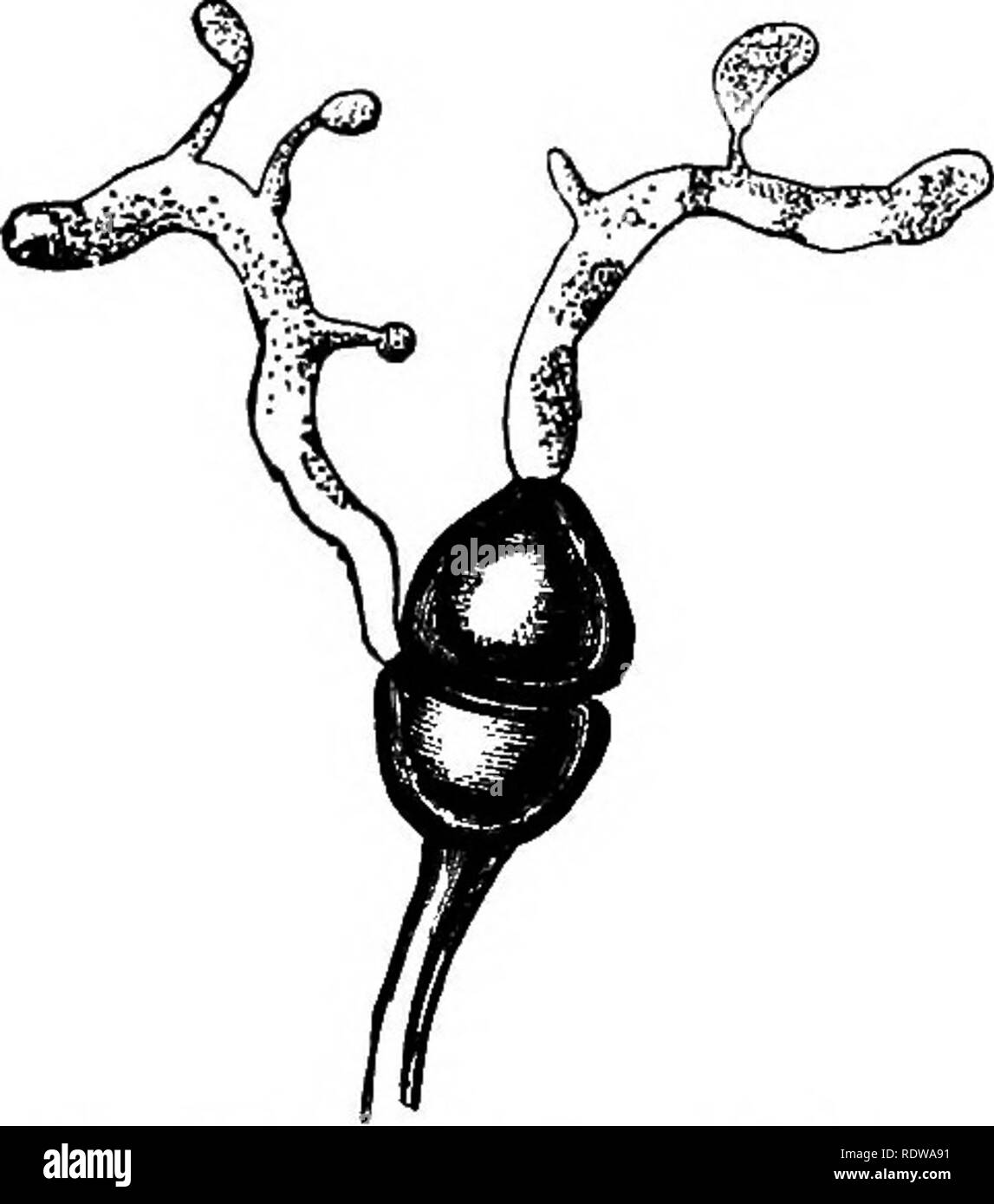. Botany for high schools and colleges. Botany. 314 BOTANY. or less elongated lines. In color they are almost invariably- brown or nearly black,in marked contrast to the reddish yellow (orange) uredospores. In some cases they are produced early in the season, but in the greater number of cases they appear in the autumn, and then remain through the winter upon the dead stems of their host plants. The following spring the teleutospores germinate by sending out a jointed filament {the promycelium) from each cell; this grows to several times the length of the teleutospore, and then sends out a few

Image details
Contributor:
The Book Worm / Alamy Stock PhotoImage ID:
RDWA91File size:
7.1 MB (148.5 KB Compressed download)Releases:
Model - no | Property - noDo I need a release?Dimensions:
1485 x 1682 px | 25.1 x 28.5 cm | 9.9 x 11.2 inches | 150dpiMore information:
This image is a public domain image, which means either that copyright has expired in the image or the copyright holder has waived their copyright. Alamy charges you a fee for access to the high resolution copy of the image.
This image could have imperfections as it’s either historical or reportage.
. Botany for high schools and colleges. Botany. 314 BOTANY. or less elongated lines. In color they are almost invariably- brown or nearly black, in marked contrast to the reddish yellow (orange) uredospores. In some cases they are produced early in the season, but in the greater number of cases they appear in the autumn, and then remain through the winter upon the dead stems of their host plants. The following spring the teleutospores germinate by sending out a jointed filament {the promycelium) from each cell; this grows to several times the length of the teleutospore, and then sends out a few lateral branches, each of which bears a small terminal cell, a sporid- iura (Fig. 217, A and S, and Fig. 218). The sporidia are extremely minute, and, as a consequence, are can-ied about from place to place in the wind with great ease. When they fall upon the proper plant, each sporidium sends out a minute filament, which perforates the epidermis-cells, and from these passes into the leaf parenchy- ma, where it develops into a mycelium (Fig. 217, C). From this last mycelium the eecidium fruits first described develop. (a) The life-cycle, as above given, is apparently abridged in some of the UredinesB. The secidium and uredo stages are merjfed into one, or either the first or seconil is entirely wanting. This appears to be the case in Phragmidium, Gymnosporangium, Melampsora, etc. (6) With most of the species it happens that the aecidiospores (conidia) develop upon one host, and the uredospores and teleutospores upon an- other. This ajternation, which is termed by De Bary hetercecism, has added very much to the ditficulty of the study of these fungi, and pos- sibly the apparent abridgement of the life-cycle above mentioned may in some instances be only an obscure hetercecism. (c) Thus far the sexual organs have not been discovered ; Sachs* argues that they must precede the secidiospores, and that the secidium fruit is in all probability the result of a sexual act. He bases his